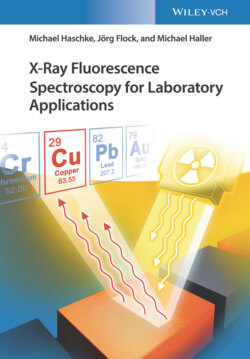Читать книгу X-Ray Fluorescence Spectroscopy for Laboratory Applications - Michael Haschke, Jörg Flock - Страница 35
3.3.2 Glasses
ОглавлениеGlasses are amorphous substances that can contain very different elements, usually in the form of oxides; they are dissolved in glass formers and have typically a good homogeneity and a high surface quality. Glasses are available in very different forms for the analysis: commercial flat glasses, molded glass, and glass in art objects. Glassy beads are also frequently produced with the goal to obtain homogeneous samples from minerals or other small-particle materials. In this way, not only surface effects but also mineralogical influences can be neglected.
To keep contaminations small during the melting process, Pt crucibles are used. During the melting of the glasses, low melting temperatures are required in order to avoid or reduce the loss of easily volatile elements in the melting process. LiBO2 (lithium metaborate), Li2B4O7 (lithium tetraborate), or Na2B4O7 (sodium tetraborate or borax) are used as melting agents and glass formers (see Section 3.4).
Flat glasses usually only require shaping to fit the sample to the geometry of the measuring instrument; they already have a flat surface and are also homogeneous. The shaping can be carried out by cutting, breaking, or sawing. Remelting should be avoided, because a possible loss of easily volatile elements can occur.
For the preparation of glasses, the procedures described for metals can also be required to remove surface layers or for improving the surface quality, in particular to avoid the effects of laminations in the glass composition. As a result of the generally light matrices of glasses, the requirements for the surface quality are typically comparatively low, in particular when determining elements with high fluorescence energies due to their large information depths. The specific preparation techniques are again strongly dependent on the sample type and the analytical task. More detailed information on the preparation techniques for glasses can be found in the descriptions of the appropriate applications in Section 9.7.
Shaped glasses or art objects are often irregularly shaped, which means that sufficiently large areas are not available for a conventional large area analysis. In the case of valuable objects, sample preparation usually is not possible in order to avoid any damage to the object. Here, spatially resolved methods are recommended.
